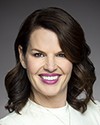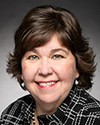Thank you for having me.
My name is Lanni Marchant. I'm an Olympian in the 10,000 metres and marathon, a former Canadian record-holder in the marathon and half marathon, graduate of the University of Ottawa and Michigan State's colleges of law, and a licensed and practising attorney admitted to the Tennessee bar and the federal eastern district bar of the United States.
I have spoken to you previously. In October 2016 I testified here about my experiences as a female national team athlete. In my testimony six years ago, I highlighted the maltreatment and abuses I suffered at the hands of my federation—the sexism, ageism and sexual harassment that I experienced from my own Olympic teammates.
To quote my own testimony, I said “There is...little understanding of the development of a female distance runner...and...that age does not necessarily dictate results. The funding of athletes like me, over 30 and female, often comes with performance requirements that are not set on younger athletes or equally on our male counterparts.”
I further went on to state that “We expect our teammates to have our backs, not to comment on our backsides. We do not need men in the sporting world to proclaim that they stand behind us as feminists because” it gives them the perfect view “to comment on our behinds. Instead, we want them to stand beside us.”
I did not realize during my previous testimony that we were on the brink of the #MeToo movement. Perhaps if I had been more timely with my discussion points, I would not have been trolled, harassed or further victimized online and by the sporting community.
Since my testimony, I did not sit back and wait for you—my government—to step up and help fix the very broken system I was expected to compete and thrive in. Instead, I took my experiences, my education and my desire to leave sport in Canada better than what I had experienced, and I joined forces with AthletesCan to be part of their safe sport work group. As part of that group, I and several other athletes—some of whom have appeared here before you—worked together on the maltreatment prevalence study that was circulated to current and recently retired national team athletes.
In 2019, I became a member of board of directors for the Sport Dispute Resolution Centre of Canada. I am now in my second term. As a board member, I sit on the complaints committee and the sport integrity committee. I'm not privy to the individual cases that come to the SDRCC, nor do I serve in any decision-making capacity on cases.
I also chair the newly created athlete advisory committee, which falls under the umbrella of the abuse-free sport program here in Canada. My role there is to ensure that the athlete voice is heard and considered in the decision-making processes of the OSIC activities. Again, I'm not dealing with any particular cases, but creating a system that is athlete centred.
It has been over these past six years of working with different sport and athlete agencies that I realized I was not alone in my experiences of maltreatment. It is where I realized just how normalized it is for athletes to be abused, demeaned and suffer—all in the name of sport.
I grew up a figure skater. I skated at the Champions Training Centre out of Cambridge, Ontario, which is also referred to as the Kerry Leitch figure skating school. I started there when I was in grade three and stayed through my first bit of high school. While there, I was weighed weekly, fat-tested monthly and had the results posted on the wall for all to see. I was a preteen female and was made to share the dressing room with skaters much older than me—male included. It was normalized to be yelled at to the point of tears and heaven forbid you get pulled into dressing room number six with Kerry Leitch.
If you were not perfect, you were made to run laps of the parking lot. I guess the silver lining is that running those that laps, for me, turned into running laps of the Olympic oval. Many of my teammates were not nearly as fortunate.
Nipple grabbing and discussing the development of my body were a daily occurrence, with older girls passing along tips on how to stay small, skip periods or avoid going through puberty altogether. Male coaches and fellow skaters would prop us up on their laps to have “chats”. Because it was a pairs training centre, it was normalized to have parts of your body touched by men and boys to demonstrate lifts or moves. Their hands would linger. The entire culture was toxic and overly sexed.
I left that environment when I discovered running. My body dysmorphia stayed with me. I was fortunate to find my coach, Dave Mills, at the London Western Track and Field Club. I do not know if I would have survived my high school running career, and professional career since, without him.
My university experience was not any different from my skating years. Yes, I was in the U.S. NCAA system, but I imagine it paralleled the experiences of my Canadian counterparts. There, eating disorders were part of what it took to be on team. Coach Gautier would openly discuss his favourite parts of our bodies. He would slut-shame the female runners and celebrate the guys for their dating activities.
Any systems we had back then did not provide any solutions and certainly did not provide any protection for us, the athletes.
In speaking up, we should not have to be afraid of losing our scholarships, our funding, our spot on the team or access to services.
How is it that my experiences in sport—dating all the way back to the 1990s—and the fear that those environments thrived off of are still those same experiences described by athletes half my age today?
I have done my best over the past six years to help be part of a fix for the Canadian sport system. I have to ask, where were you?
We have the abuse-free sport program up and operating in Canada, but why has it taken so much pressure for you to let it have any teeth? Why do we have to wait until this spring to see it be mandatory for every national sports organization to sign on to the program?
It's been proven over and over that NSOs cannot be trusted to self-regulate. Athletes are not protected. NSO investigators ignore pleas from witnesses to look at the entirety of the toxic environment of a club and skating centre. The goal always seems to be to protect the brand and the status quo. The concern falls more on protecting the career of an accused rather than the experiences and career of the athlete.
Athlete complaints are not a standard HR complaint. We often do not have any lateral moves or other places to go. It isn't like we can just go and pick another country to represent.
In 2016, the high performance director of Athletics Canada, Peter Eriksson, was fired for his abuses of power and maltreatment of national team athletes, only to then be hired by Own the Podium.
Sport in Canada is incestuous. Where and how are we meant to feel safe? Where was my protection when I was pegged as the athlete to get Peter Eriksson fired? Why did my testimony here six years ago fall on your deaf ears?
To pursue a sport and represent Canada should not mean a decision between risking our physical, mental and emotional health to achieve our goals, or the alternative, which is to walk away completely because the system is broken.
Athletes are screaming for a sporting system to provide a safe and protected space for us to speak up. We have been asking for one and are now demanding one. After the maltreatment prevalence study demonstrated a toxic sport environment when we demanded an independent mechanism for safe sport, why did the application process require and mandate that it be built and housed within an already existing entity?
I spoke up six years ago. I'll quote it again:
I meant it very much when I said that the athlete can't be the one who's constantly taking on these battles.
I don't know why.... The women before me weren't making teams, but they weren't standing up and arguing as loudly as I am. I don't know if it's because of the background I have or because, at the end of the day, I don't care. I want to represent Canada, and I would hope you want me out there representing you, but if you don't want me there, then fine, I'll find something else and excel at that. It might take more money and it might take more time, but the government and the different federations—Sport Canada and the COC—need to have our backs. If I'm willing to stand out there and be vocal and face the retribution or retaliation of my federation, I would hope that I'd be able to rely on you and on the bigger federations to come to my aid when I do need it.
We, as athletes, are now asking for more.
I understand that my perspective on the abuse-free sport program in Canada is unique. I've had a very unique view of its creation because of my roles. I understand the fear and disbelief in any system that is born out of programs and systems that were already in place.
I am not here to champion or tear down any program. I know the work that we put in. I know the goals that we have.
I'm here because I understand the importance of protecting athletes at any age and regardless of any ego—yours and mine included.
I'm here because despite everything I know about maltreatment and abuse in sport, I was still subjected to grooming and taken advantage of by a sports practitioner later in my career. My mindset and scope was so narrowly focused on stopping predators and abuses of those younger than me that I had a blind spot. We cannot afford any more blind spots.
It isn't my job to fix sport in Canada. It isn't any athlete's job. I have done everything that I knew to do to try, though. I suffered the retaliations. I had my Canadian teammates call me “low-performing Lanni”, because without an Olympic gold medal, how dare I ask to be respected as an athlete and treated as a human?
I ask again, what did you do in these past six years to better sport in Canada? What are you actually prepared to do now?



